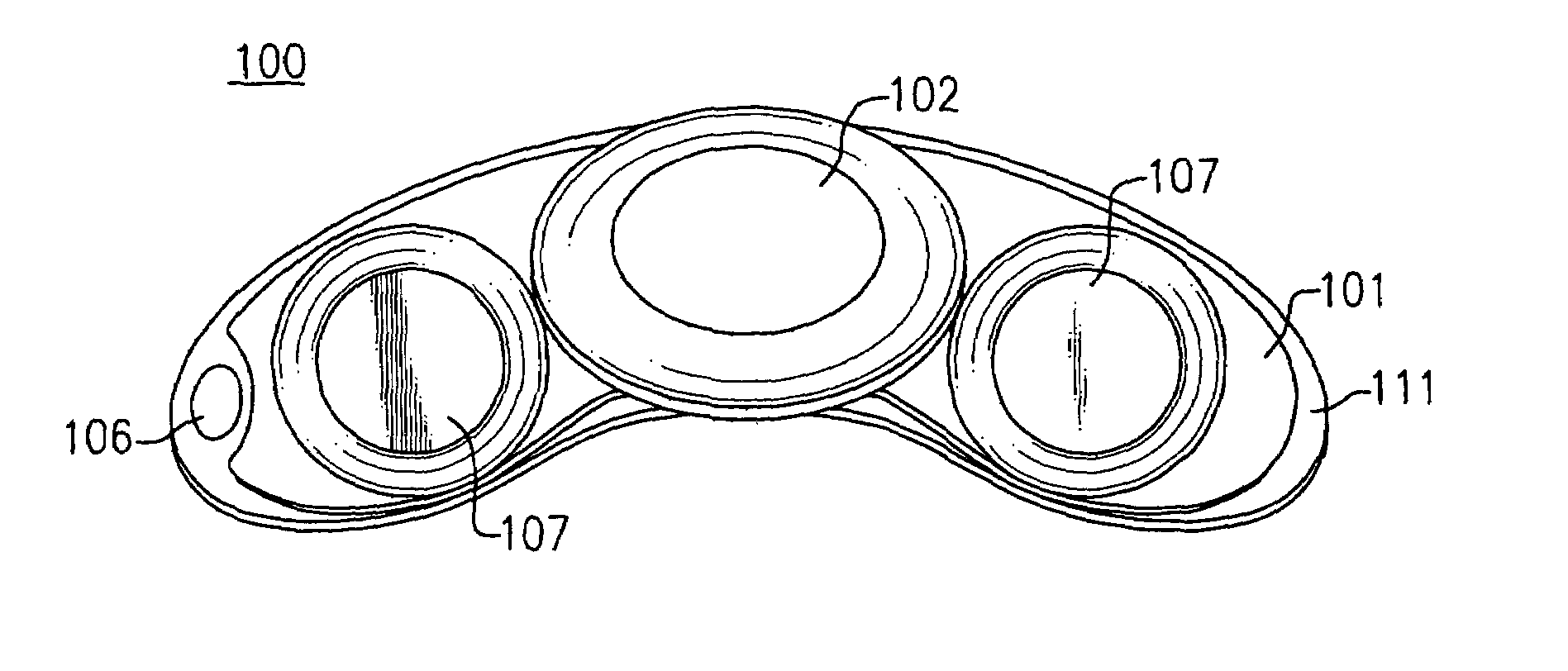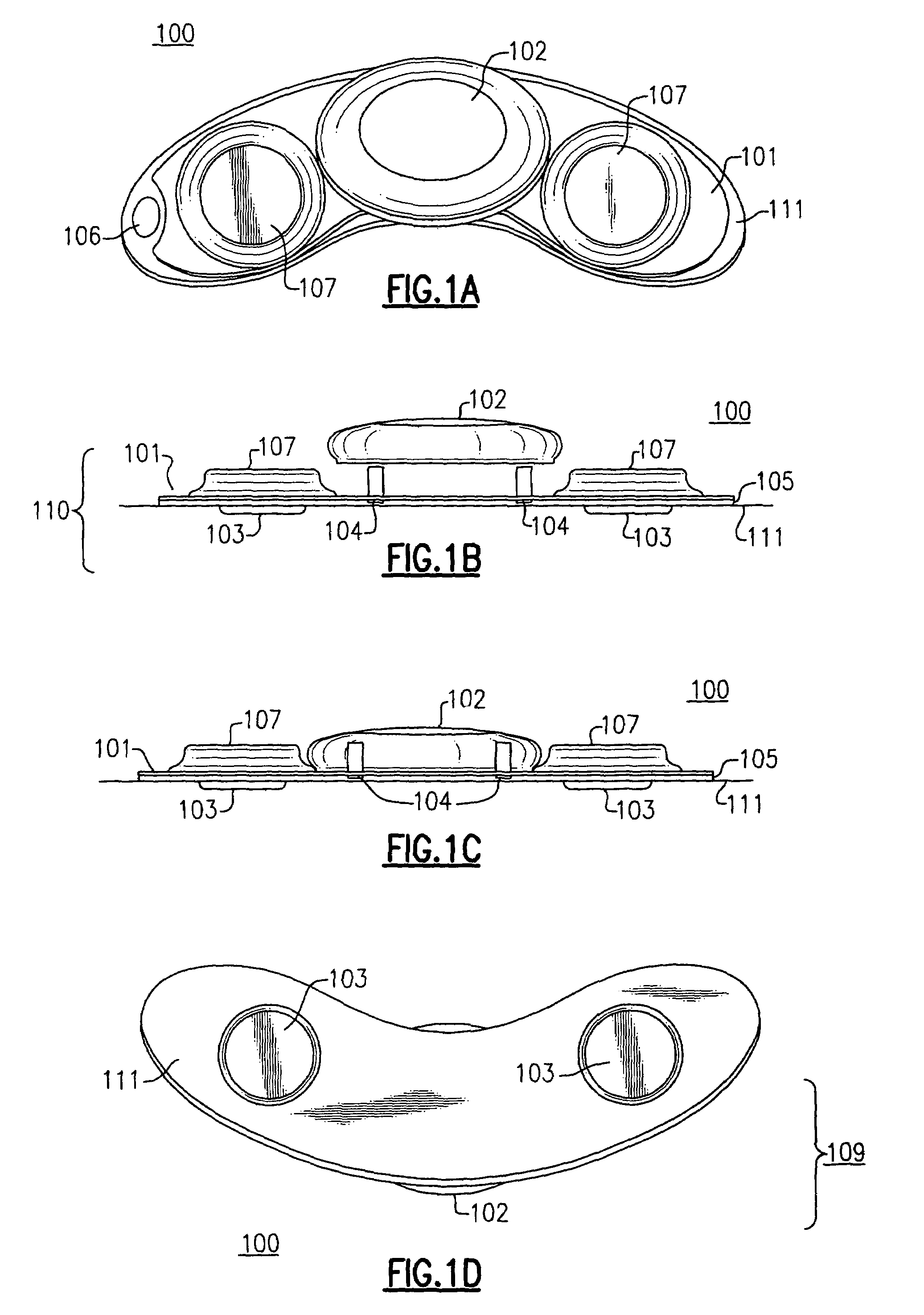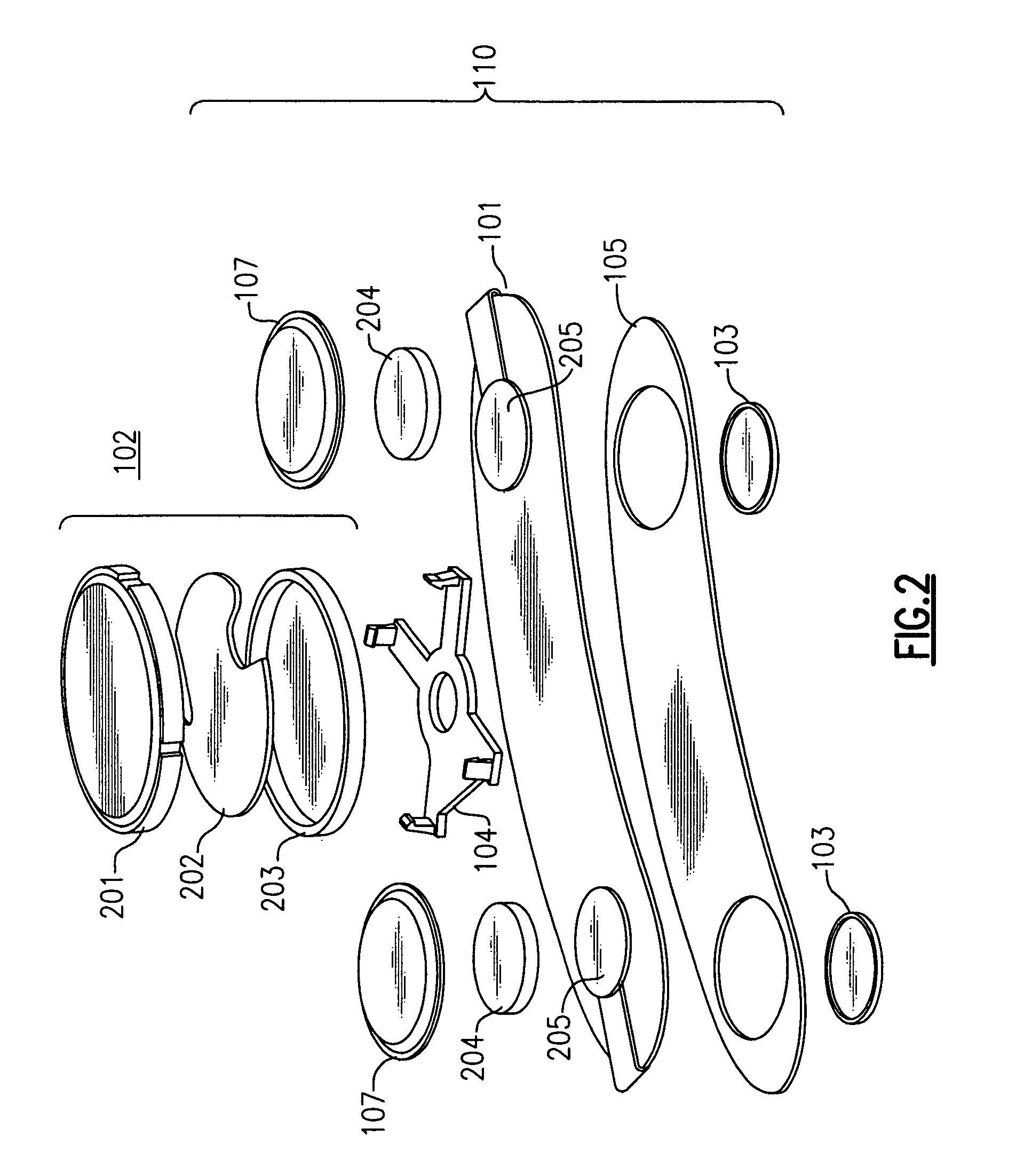Body worn physiological sensor device having a disposable electrode module
a sensor device and electrode module technology, applied in the field of physiological monitors, can solve the problems of tangled wires, inability to do any of the traditional ecg analysis functions, and inability to use sensors
- Summary
- Abstract
- Description
- Claims
- Application Information
AI Technical Summary
Benefits of technology
Problems solved by technology
Method used
Image
Examples
Embodiment Construction
[0040]A “body worn” device is described herein with regard to certain exemplary embodiments. A “body worn” device is defined herein as a device that is directly, but non-permanently, affixed to a patient's body. A “body worn monitor” is a device that can be directly “worn” on the patient's body as a single unit, including one or more physiological sensors and a communications and computation module to perform at least initial processing of one or more physiological measurements made using one or more physiological sensors. Unlike prior art patient-wearable devices, at least one sensor can be incorporated into the device that makes a direct or indirect (such as by capacitive coupling) electrical connection with the patient's body without the use of external wires from sensors to the device. In addition and unlike athletic heart monitors, a “body worn” monitor can be a full functioning medical grade monitor, e.g. meeting the requirements of European Unions' Medical Device Directive an...
PUM
 Login to View More
Login to View More Abstract
Description
Claims
Application Information
 Login to View More
Login to View More - R&D
- Intellectual Property
- Life Sciences
- Materials
- Tech Scout
- Unparalleled Data Quality
- Higher Quality Content
- 60% Fewer Hallucinations
Browse by: Latest US Patents, China's latest patents, Technical Efficacy Thesaurus, Application Domain, Technology Topic, Popular Technical Reports.
© 2025 PatSnap. All rights reserved.Legal|Privacy policy|Modern Slavery Act Transparency Statement|Sitemap|About US| Contact US: help@patsnap.com



